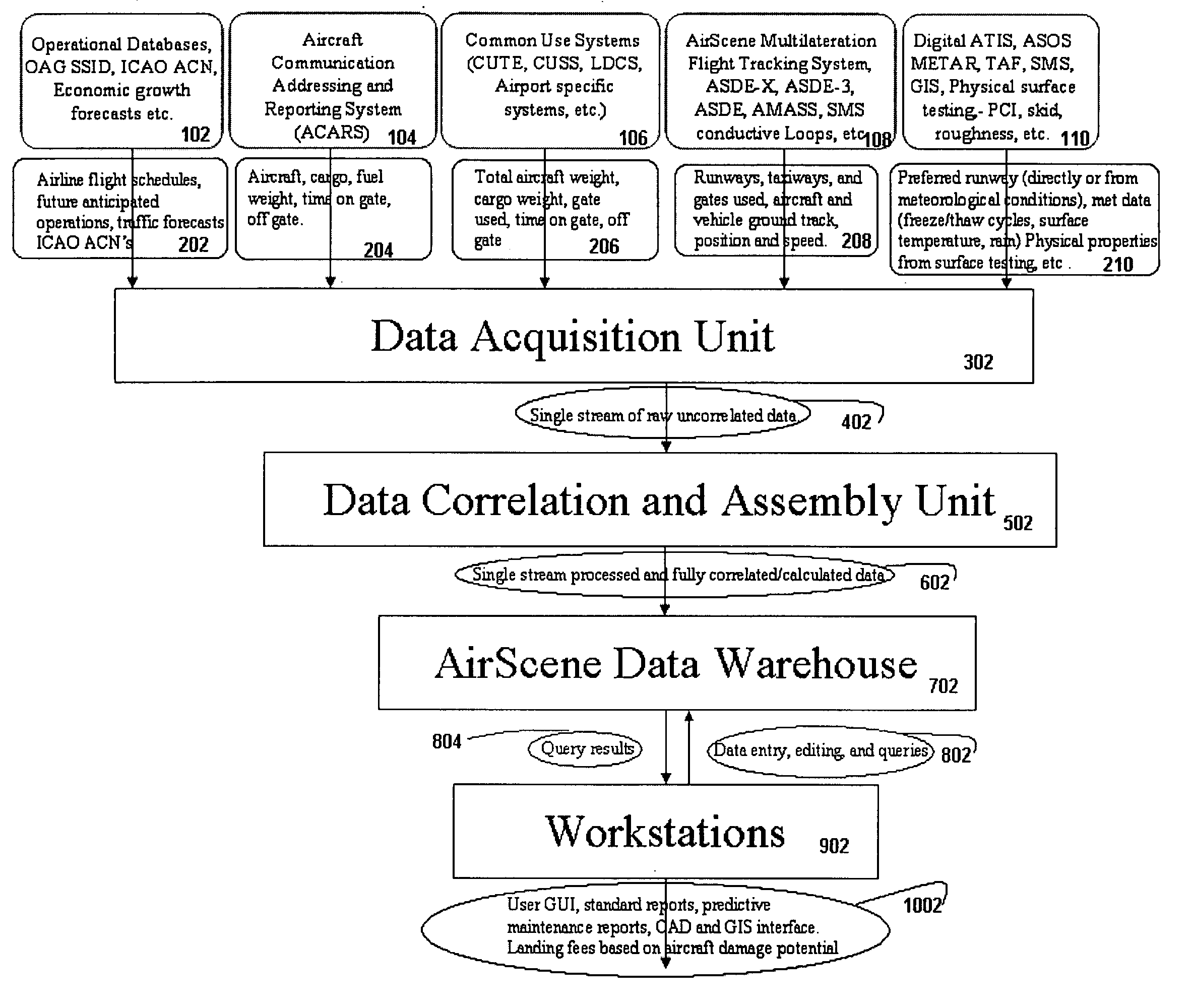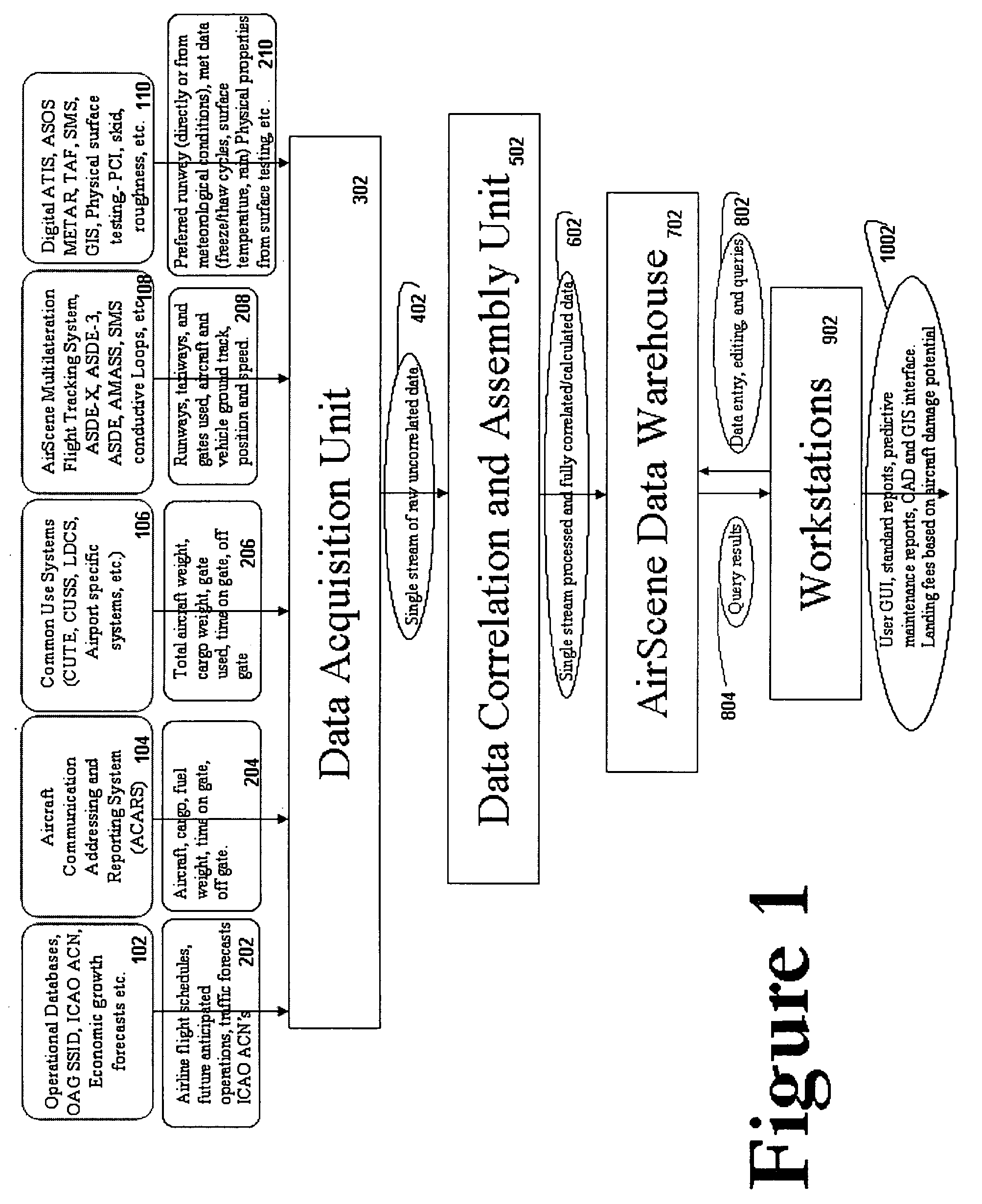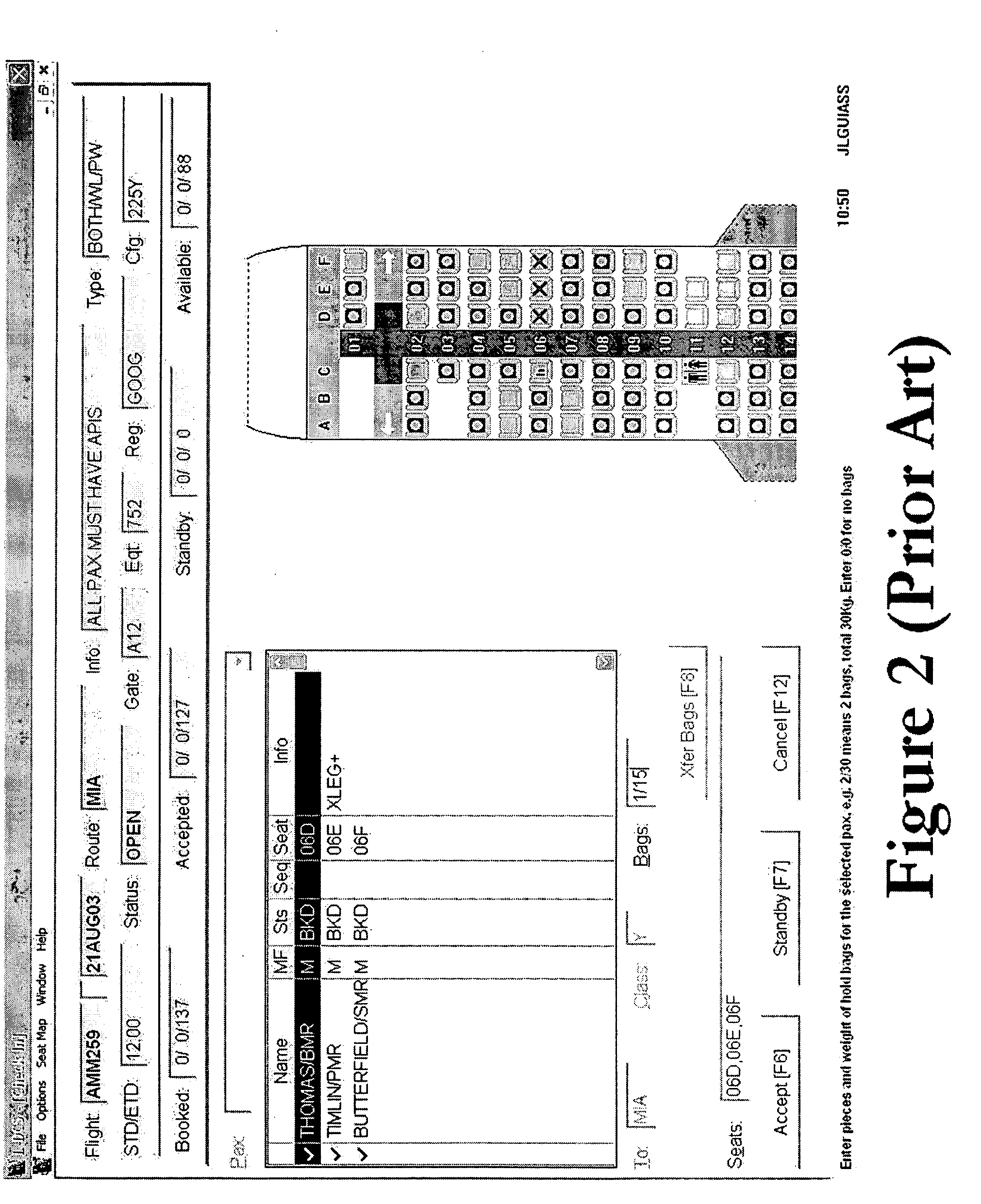Airport pavement management system
a technology for managing systems and airports, applied in the direction of vehicles, instruments, etc., can solve the problems of increasing repair costs, generating noise and other complaints, and generating more severe responses, so as to reduce the number of aircraft that overfly, and accelerate the wear and tear
- Summary
- Abstract
- Description
- Claims
- Application Information
AI Technical Summary
Benefits of technology
Problems solved by technology
Method used
Image
Examples
Embodiment Construction
[0050]FIG. 1 is a block diagram illustrating the major components of the AirScene™ Pavement Management System and the types of data that are utilized. The AirScene™ Pavement Management System utilizes this data to quantify the pavement damage caused each individual aircraft movement. This cumulative data allows AirScene™ to compute pavement condition based on an initial survey and the calculations of accrued damage. This information can be displayed through AirScene™ in the form of tables, graphs, or graphically represented on an airport diagram. The display can show current conditions, rates of accruing damage, and future wear rates and areas.
[0051] Referring to FIG. 1, the system draws on data from the AirScene™ Data Warehouse (ADW). The ADW represents a single repository for all the information acquired from a number of different data sources. These data sources may include operational databases 102, from data 202 may include airline flight schedules, future anticipated operatio...
PUM
 Login to View More
Login to View More Abstract
Description
Claims
Application Information
 Login to View More
Login to View More - R&D
- Intellectual Property
- Life Sciences
- Materials
- Tech Scout
- Unparalleled Data Quality
- Higher Quality Content
- 60% Fewer Hallucinations
Browse by: Latest US Patents, China's latest patents, Technical Efficacy Thesaurus, Application Domain, Technology Topic, Popular Technical Reports.
© 2025 PatSnap. All rights reserved.Legal|Privacy policy|Modern Slavery Act Transparency Statement|Sitemap|About US| Contact US: help@patsnap.com



